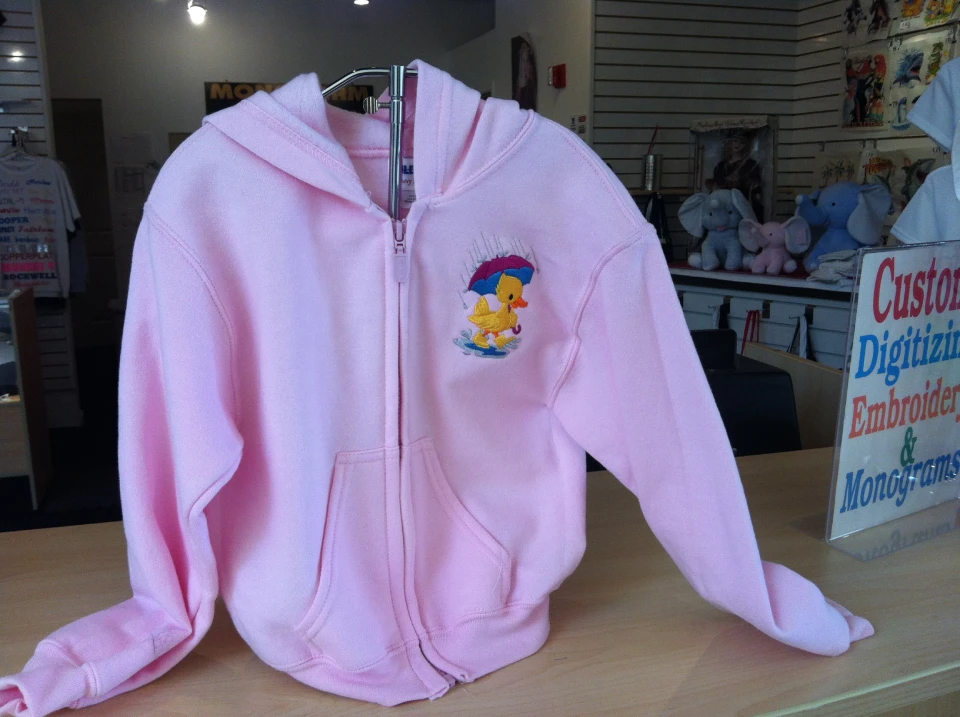Embroidered Sports Teams Names and Numbers - Professional and Durable
Embroidered Sports Teams Names and Numbers - Professional and Durable
Blog Article
The Art of Custom Needlework: Opening the Secrets to Creating One-of-a-kind and Remarkable Designs
The keys to developing customized needlework layouts that captivate the eye and leave a lasting perception lie in a fragile equilibrium of method, imagination, and attention to information. As we delve into the globe of customized needlework, we uncover the nuanced interplay between string selection, sew intricacy, and style customization that raises a simple garment to a job of art.
Choosing the Right Embroidery Threads
When selecting needlework threads, what vital elements should you consider to make certain the ideal outcomes for your customized designs? The selection of embroidery string is essential in determining the final result of your stitched design.
Furthermore, the weight or density of the thread plays a considerable function in the appearance of the needlework. Thicker strings can include measurement and texture to your design, while finer threads are suitable for detailed details and tiny message. Furthermore, thinking about the color fastness and washability of the string is important to make certain that your personalized styles maintain their quality and vibrancy with time. By very carefully evaluating these factors and selecting premium strings that fulfill your certain needs, you can boost the visual charm and long life of your embroidered developments.
Exploring Different Stitch Methods
To delve right into the realm of 'Checking out Different Stitch Techniques', one have to grasp the complexities and subtleties that each sewing approach offers the art of needlework. Various stitch methods not only add visual passion but additionally add to the overall structure and measurement of the design. One preferred stitch technique is the satin stitch, which includes very closely packed parallel stitches to produce a smooth and shiny surface area, ideal for completing shapes and developing vibrant outlines.
On the various other hand, the backstitch is a functional strategy typically used for describing and adding fine information. It involves sewing backward to produce a strong line of needlework. In addition, the French knot stitch includes a responsive element to designs, best for creating textured accents like blossom centers or ornamental touches.
Discovering various stitch techniques allows embroiderers to play with light, shadow, and deepness within their styles, raising the visual charm and imaginative top quality of their embroidery jobs. By mastering numerous stitching techniques, one can unlock limitless opportunities for producing unique and remarkable custom-made embroidery pieces.
Incorporating Personalized Design Elements
Having explored the ins and outs of different stitch strategies such as the satin stitch, backstitch, and French knot, the emphasis currently moves towards incorporating personalized style elements in personalized embroidery jobs. Customized layout elements play an essential duty in making try this web-site needlework tasks absolutely unique and unforgettable. One method to integrate customization is by adding initials, names, or significant days to the style. This not just adds an individualized touch but likewise improves the emotional value of the needlework item.
One more way to include individualized design elements is by consisting of signs or themes that hold unique definition to the recipient or reflect their rate of interests and individuality. As an example, integrating a favorite blossom, animal, or hobby-related icon can make the embroidery design more significant and tailored. In addition, choosing shades that reverberate with the recipient or line up with the designated theme can even best british suits more enhance the customization of the embroidery project.
Grasping the Art of Color Coordination

One key facet of shade coordination is comprehending color concept. This consists of knowing exactly how various shades engage with each other, the emotions they share, and exactly how they can be combined to develop aesthetically attractive designs. By using color concept concepts, embroiderers can develop unified color combinations that improve the overall appearance of the layout.
Furthermore, focusing on comparison is critical in color coordination. Making use of contrasting shades can help particular elements of the design pop, improve clarity, and produce an aesthetically vibrant needlework piece. By grasping the art of shade coordination, embroiderers can elevate their styles and produce memorable items that reverberate with customers and viewers alike.
Enhancing Appearance With Advanced Needlework Stitches

French knots, for instance, are excellent for including little, elevated dots to your style, simulating the look of beads or developing a textured surface area. Bullion knots, on the other hand, can be used to create twisted, ropelike elements that include a lavish feel to the advice embroidery. Seed sewing involves little, scattered stitches that can load in areas with a polychromatic appearance, while turkey work produces cosy, dimensional accents reminiscent of pet hair or vegetation. Trying out these innovative needlework stitches enables you to press the boundaries of conventional embroidery and produce really distinct and aesthetically enticing structures in your layouts.
Conclusion
Finally, the art of custom embroidery entails a mix of picking the ideal threads, exploring numerous stitch techniques, integrating customized layout components, mastering shade coordination, and enhancing texture with innovative stitches. By recognizing and implementing these key elements, embroiderers can develop unique and unforgettable designs that showcase their imagination and ability. Needlework fanatics can open the tricks to developing gorgeous and bespoke pieces that stand apart and leave a long-term perception.
Report this page